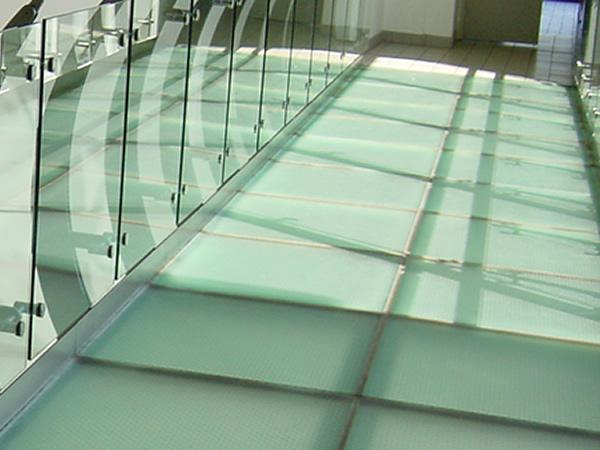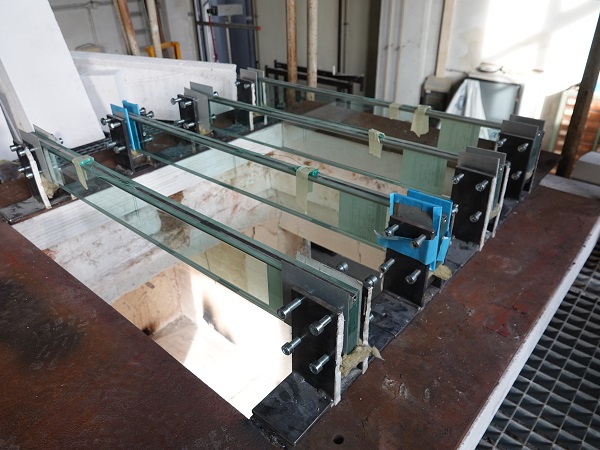Few design features are as striking or as impressive as a glass floor – and the extra light that floods through a glass floor can transform a room into an open and airy space.
But just how strong are glass floors? And are they entirely safe for use in a commercial environment?
Regulations for glass floors
All types of flooring must meet strict Building Regulations when it comes to their load-bearing capacity, and glass floors are certainly no exception.
British Standards BS6399: Part 1, 1996 and BS5395: Part 1, 2000 both come into play when installing flooring, governing the standards for dead and imposed loadings and the dangers of slippage.
How strong a glass floor needs to be depends largely on where it is to be installed and the loads it will bear. Glass floors installed purely as walkways will be under less stress than those in, say, a supermarket, where heavy restocking cages loaded with bottles etc are wheeled around.
The point load on one of those little wheels is going to be considerably higher than the same load spread out over a larger area, so this must be accounted for. The same goes for the high point loads on the legs of heavy furniture.
What makes glass floors strong?
A number of factors contribute to the strength of a glass floor, but primarily, it comes down to the type of glass used and the amount of support for the glass.
Glass floors are almost always made of laminated glass in one form or another. Often this will be either heat strengthened laminated glass or toughened laminated glass.
Heat strengthened glass is roughly twice as strong as annealed glass, while toughened glass can be five times as strong.
However, the tensile stresses within toughened glass mean that it can be vulnerable to short sharp shocks, particularly around the edges. And when toughened glass breaks, it shatters in its entirety.
Laminated glass is made by bonding two or more layers of glass around an inner laminate layer, so even if one pane breaks, the glass will remain in place. So even though a layer of toughened glass shattering would not seriously compromise the safety of a glass floor in the short term, it would certainly be costly to replace.
For this reason, heat strengthened laminated glass is often the preferred option for glass floors.
The thickness of the glass needed for a glass floor will depend on the amount of support provided by the structure and the widths the glass has to span.
Required thicknesses increase sharply as the span of glass increases, so for larger areas, glass floors will usually be supplied as multiple panels rather than a single unit. This keeps the weight (and cost) of the glass floor down.
Glass floors generally tend to work out around twice as strong as their wooden counterparts, owing to both the inherent strength of the glass itself, plus the additional support structure that secures it in place.
This video by the BBC gives a good indication of just how strong a glass floor can actually be – the reporter is filmed on a glass-bottomed bridge in China, testing the strength of one of its glass panels with a sledgehammer.
He quickly smashes the top layer of toughened glass, but the super-strength laminated glass panel stays intact no matter how much he hammers it.










Comments
Glass floors look beautiful and it is a durable option for your flooring needs. It gives the breathtaking, expensive look and its natural transparency and depth of glass tiles simply create stunning elegance. But the glass floor may sometimes get slippery when it is wet and it would become dangerous to your family members especially for senior citizens. Because for this reason it is better to install vinyl flooring, hardwood flooring or laminate flooring. If you want, you can view online or visit this flooring store https://zothexflooring.com/laminate/ where you can see most of the people today prefer vinyl, hardwood and laminate tile flooring.
Precise and to the point. The contribution by other readers is a clear indication of the impact the blog has. Keep it up.